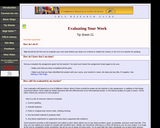
This resource is a guideline to evaluating your work for a research paper.
- Subject:
- English Language Arts
- Material Type:
- Interactive
- Provider:
- Cambridge Rindge and Latin School
- Author:
- Cambridge Rindge and Latin School
- Date Added:
- 02/26/2019

This resource is a guideline to evaluating your work for a research paper.
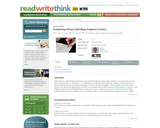
Well known for addressing social issues in the world through her poetry, Maya Angelou’s moving poems serve to teach historical topics in this lesson. To understand the world that surrounded her, students practice their visual literacy skills as they first examine photographs from the Library of Congress. These primary sources illustrate some of the events that affected her life and thus her writing. Next students research these events in order to create trading cards using the ReadWriteThink Trading Card App or Trading Card Creator Student Interactive. While reading Angelou’s poems, students share the trading cards to better understand the background for her writing.
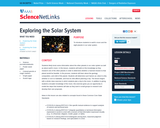
Students will build on their existing knowledge of the solar system as they research one of the planets in order to determine whether a manned mission to that planet would be feasible. Students will collect information about the geology, composition, and orbit of their assigned planet. They will then work collaboratively to create a proposal for or against planning a trip to the planet to be presented to the rest of the class.
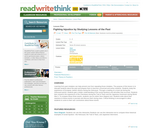
Learning from past mistakes can help prevent one from repeating those mistakes. The purpose of this lesson is to educate students about the past and prepare them to become concerned and active students. Students study the experience of European Jewish citizens during the Holocaust. Through a reading of a novel set during the Holocaust period, students gain a better understanding of the social injustices and atrocities that occurred. Students then research the experience of the Cherokees during the Trail of Tears and the Japanese Americans during World War II. To compare these three events, students use an online Venn diagram tool. Students write about their reactions to these events in journals and discuss them during class. Critical thinking is encouraged to allow students to come to their own conclusions about these events.
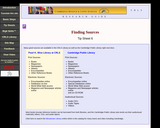
This resource is a guideline to basic steps in finding sources for a research paper.
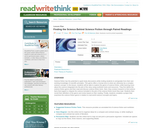
Science fiction has the potential to spark lively discussions while inviting students to extrapolate from their own working knowledge of scientific principles. They first define the science fiction genre and then read and discuss science fiction texts. Next, they conduct research to find science facts that support or dispute the science included in the plot of the science fiction book they read. Students then revisit their definition of the genre and revise based on their reading. Finally, students complete a project that examines the science fiction genre in relation to real-world science concepts and topics.
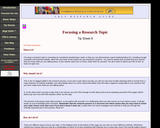
This resource is a guideline to focusing a reseach topic for a research paper.
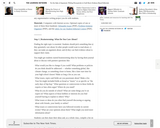
Suggestions on how to guide students through the writing process when writing editorials "” from brainstorming a topic to publishing their work "” and all the steps in between.

Students will begin to take what they have learned about human rights, the UN and apply it to an issue that is important to them. Students will work together to write a simple UN resolution to address that issue and present it to the class through a model UN activity. The lesson meets NCDPI global education goals such as investigating the world, recognizing perspectives, communicating ideas and taking action. Note: This lesson was created in accordance with the 7th Grade Social Studies Essential Standards and the VIF/Participate Global Competence Indicators for Grade 7. For more information about VIF/Participate and these indicators, please visit https://www.participate.com/. This lesson was developed by Lindsey Gallagher as part of their completion of the North Carolina Global Educator Digital Badge program. This lesson plan has been vetted at the local and state level for standards alignment, Global Education focus, and content accuracy.
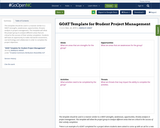
This template should be used in a manner similar to a SWOT (strengths, weaknesses, opportunities, threats) analysis in project management. This template will allow the project group to analyze different areas that are critical to the success of their activity completion. Students will have an opportunity to make real world connections, use technology and collaborate in order to complete the project objectives.
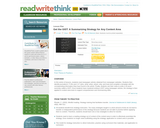
In this series of lessons, students read newspaper articles obtained from newspaper websites. Students then identify journalism's "5 Ws and 1 H" (who, what, when, where, why, and how) and complete a template with the corresponding information they have found in the article. Finally, students use their notes to write a 20-word summary called a GIST. Once students have mastered writing a GIST using newspaper articles, the strategy is then applied to content area texts to support comprehension and summarizing skills.
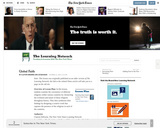
Students examine the coexistence of different religions within various countries by chronicling the evolution and nature of those religions throughout history. They then synthesize their findings by designing a creative work that captures the presence of the religions in each of the countries.
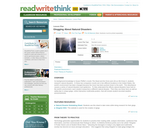
As background knowledge to Susan Pfeffer’s novels, The Dead and the Gone and Life as We Knew It, students research natural disasters for this lesson. In these two companion novels set in two different locations in the United States, the world’s environment has been changed because the moon has been pushed closer to the earth. This disturbance causes a series of natural disasters and epidemics. To fully understand the effects natural disasters have had on the world’s environment, each student researches a different natural disaster. Then they use these facts as well as safety tips in unique glogs, online interactive multimedia posters, that will include student-recorded weather announcements.
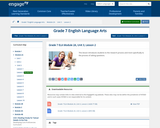
This lesson introduces students to the research process and more specifically to the process of asking questions.
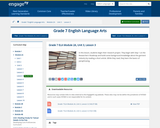
In this lesson, students begin their research project. While reading a short article, students learn the basics of paraphrasing.
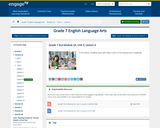
In this lesson, students work with Steps 3 and 4 of the Researcher’s Roadmap.
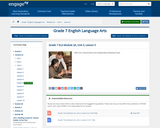
This lesson includes the Mid-Unit 3 Assessment and Independent Reading Check.
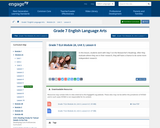
In this lesson, students work with Step 5 on the Researcher’s Roadmap.
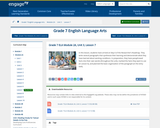
In this lesson, students write several paragraphs that synthesize their learning and demonstrate what they have learned about working conditions.
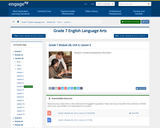
In this lesson, students begin their research project.